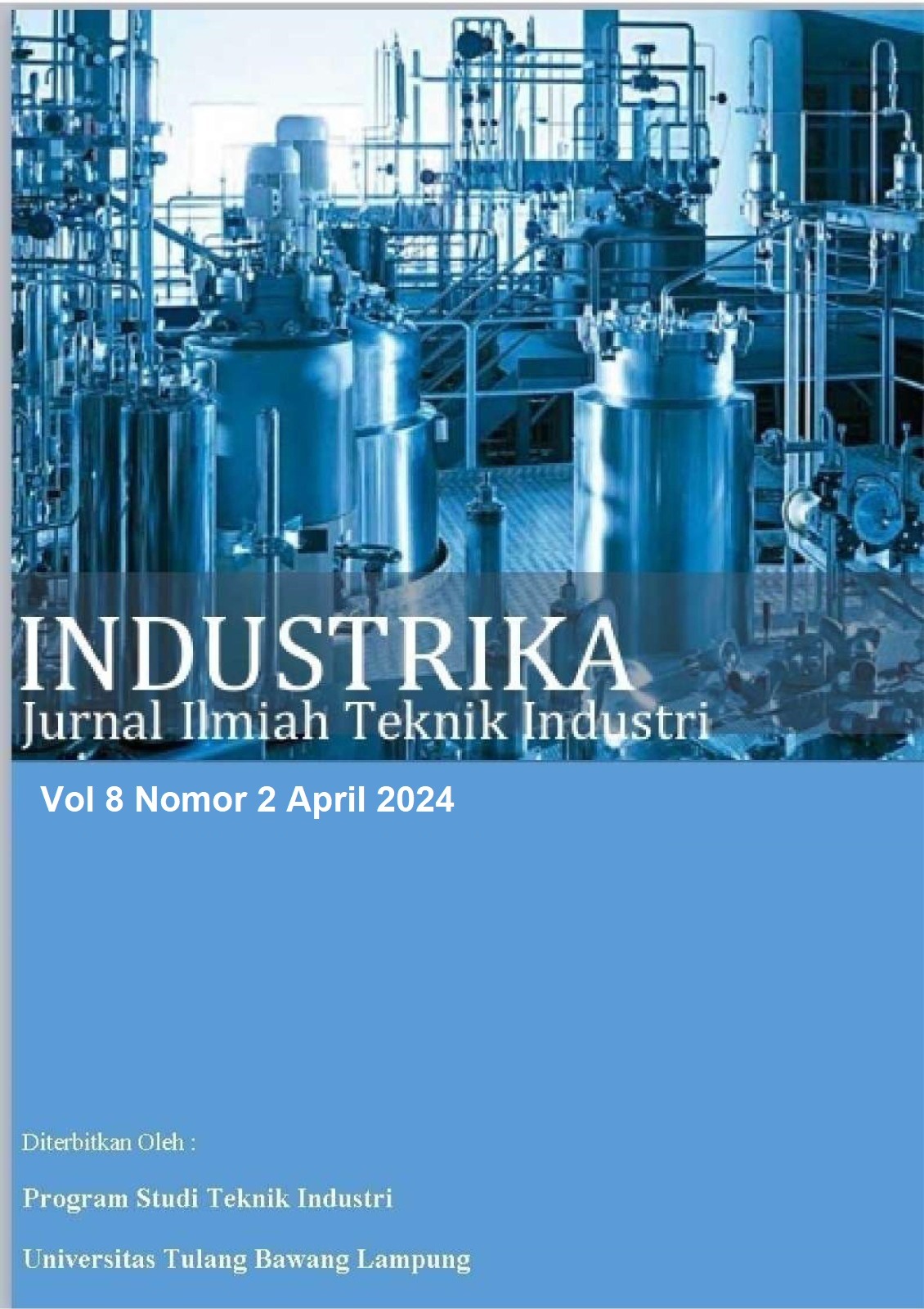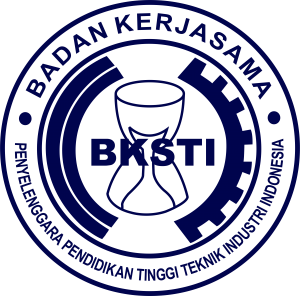Optimasi Jaringan Syaraf Tiruan Dalam Memprediksi Jumlah Penduduk Nasional
DOI:
https://doi.org/10.37090/indstrk.v8i2.1526Abstract
Predictions or forecasting are important parameters in determining policy that will be implemented in the future. The higher the population of a country, the more it will affect the balance of that country. This research aims to predict the national population using the Artificial Neural Network (ANN) approach. The sample for this research is population data for each province obtained from the National Central Statistics Agency (BPS). The data is iterated from 2011 to 2022. The approach method uses backpropagation Artificial Neural Networks (ANN). The architectural model is determined with 2 hidden layers and 1 output, namely 5-20-10-1 with learning rate variations of 0.01, 0.02, and 0.03. ANN prediction results are able to predict the national population. The success of the three models shows that the ANN model with a Learning rate of 0.01 has the highest accuracy level of 96.9697, equivalent to 97%. This is proven by the model's success in predicting 32 out of 33 data samples with a time duration of 117 seconds. The prediction results showed that the highest population numbers were in three provinces, namely Central Java, West Java, and East Java. Meanwhile, the lowest population is in West Papua province.
Keywords: BPS, JST, Learning Rate, Optimization.
Downloads
References
Achmalia, Fany Aisyah, and Sugiman Walid. 2020. “Peramalan Penjualan Semen Menggunakan Backpropagation Neural Network Dan Recurrent Neural Network.” UNNES Journal of Mathematics 9(1):6–21.
Amira, Hutasuhut H., Anggraeni Wiwik, and Tyasnurita Raras. 2014. “Bahan Baku Plastik.” Jurnal Teknik POMITS 3(2):169–74.
BPS. 2023. “Penduduk, Laju Pertumbuhan Penduduk, Distribusi Persentase Penduduk, Kepadatan Penduduk, Rasio Jenis Kelamin Penduduk Menurut Provinsi, 2022.” Badan Pusat Statistik Jawa Timur 1–6.
Chamidah, Nurul, Wiharto, and Umi Salamah. 2016. “Pengaruh Normalisasi Data Pada Jaringan Syaraf Tiruan Backpropagasi Gradient Descent Adaptive Gain (BPGDAG) Untuk Klasifikasi.” Jurnal Teknologi & Informasi ITSmart 1(1):28. doi: 10.20961/its.v1i1.582.
Edi, Ismanto, and Eka Pandu Cynthia. 2017. “Jaringan Syaraf Tiruan Algoritma Backpropagation Dalam Memprediksi Ketersediaan Komoditi Pangan Provinsi Riau.” Rabit : Jurnal Teknologi Dan Sistem Informasi Univrab 2(2):196–209. doi: 10.36341/rabit.v2i2.152.
Haerani, Rosita Putri Rahmi, and Erna Suhartini. 2023. “Analisis Kebutuhan Pengembangan Game Edukasi Online Untuk Meningkatkan Sustainability Literacy Pada Tema Perubahan Ikimm.” Jurnal Ilmiah Pendidikan Dasar 9(1):1792–1803.
Kurniawan, Prawidana, Hanrian Rossa, Aditya Permana, Wahyu Adi Ramadan, Adhim Bagas Wisnu Aji, Syarif Hidayatulloh, Nur Iksan, and Ulfah Mediaty Arief. 2022. “Prediksi Jumlah Penduduk Jakarta Selatan Menggunakan Metode Regresi Linear Berganda.” Jurnal Sistem Dan Teknologi Informasi (JustIN) 10(4):518. doi: 10.26418/justin.v10i4.48331.
Kusuma, Febrian, Moh Ahsan, and Syahminan Syahminan. 2021. “Prediksi Jumlah Penduduk Miskin Indonesia Menggunakan Metode Single Moving Average Dan Double Moving Average.” Jurnal Informatika Dan Rekayasa Perangkat Lunak 3(2):105. doi: 10.36499/jinrpl.v3i2.4594.
Mardiyah, Ilmiatul, Wika Dianita Utami, Dian Candra Rini Novitasari, Moh. Hafiyusholeh, and Dewi Sulistiyawati. 2021. “Analisis Prediksi Jumlah Penduduk Di Kota Pasuruan Menggunakan Metode Arima.” BAREKENG: Jurnal Ilmu Matematika Dan Terapan 15(3):525–34. doi: 10.30598/barekengvol15iss3pp525-534.
Nabawi, Hafiz. 2020. “Pengaruh Jumlah Penduduk, Tingkat Pendidikan Dan PDRB Terhadap Kemiskinan Di Kota Malang.” OECONOMICUS Journal of Economics 4(2):104–17. doi: 10.15642/oje.2020.4.2.104-117.
Nailah, Fadia, Dwi Ina Larasati, Siswanto Siswanto, and Anisa Kalondeng. 2024. “Optimasi Metode Jaringan Saraf Tiruan Backpropagation Untuk Peramalan Curah Hujan Bulanan Di Kota Denpasar.” MATHunesa: Jurnal Ilmiah Matematika 12(1):134–40. doi: 10.26740/mathunesa.v12n1.p134-140.
Napitupulu, Pretty Natalia, and M. Safii. 2024. “Penerapan Algoritma Backpropogation Dalam Prediksi Jumlah Penduduk Di Provinsi Sumatera Utara 1.” 4:4–15.
Sawitri, Made Nita Dwi, I. Wayan Sumarjaya, and Ni Ketut Tari Tastrawati. 2018. “Peramalan Menggunakan Metode Backpropagation Neural Network.” E-Jurnal Matematika 7(3):264. doi: 10.24843/mtk.2018.v07.i03.p213.
Sumantri, Wahyu Ekoliyono, Yasir Ammar Nasution, Suyono, and Rika Rosnelly. 2024. “Pengenalan Pola Aksara Batak Menggunakan Backpropagation Recognition of Batak Script Patterns Using Backpropagation.” Jurnal SISFOTENIKA 14(1):57–67.
Wijanarko, Toni, Adi Putra, M. Zakki Abdillah, Universitas Nasional Karangturi, Penulis Korespondensi, and Triple Exponential Smoothing. 2023. “Model Hybrid Untuk Prediksi Jumlah Penduduk Yang Hidup a Hybrid Model for the Prediction of the Number of Populations.” Jurnal Teknologi Informasi Dan Ilmu Komputer (JTIIK) 10(6):1253–64. doi: 10.25126/jtiik.2023107484.
Downloads
Published
Issue
Section
License

This work is licensed under a Creative Commons Attribution-ShareAlike 4.0 International License.









